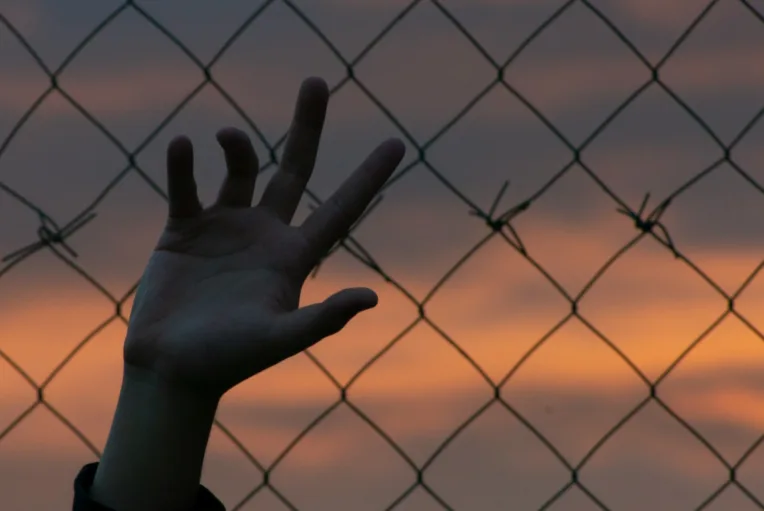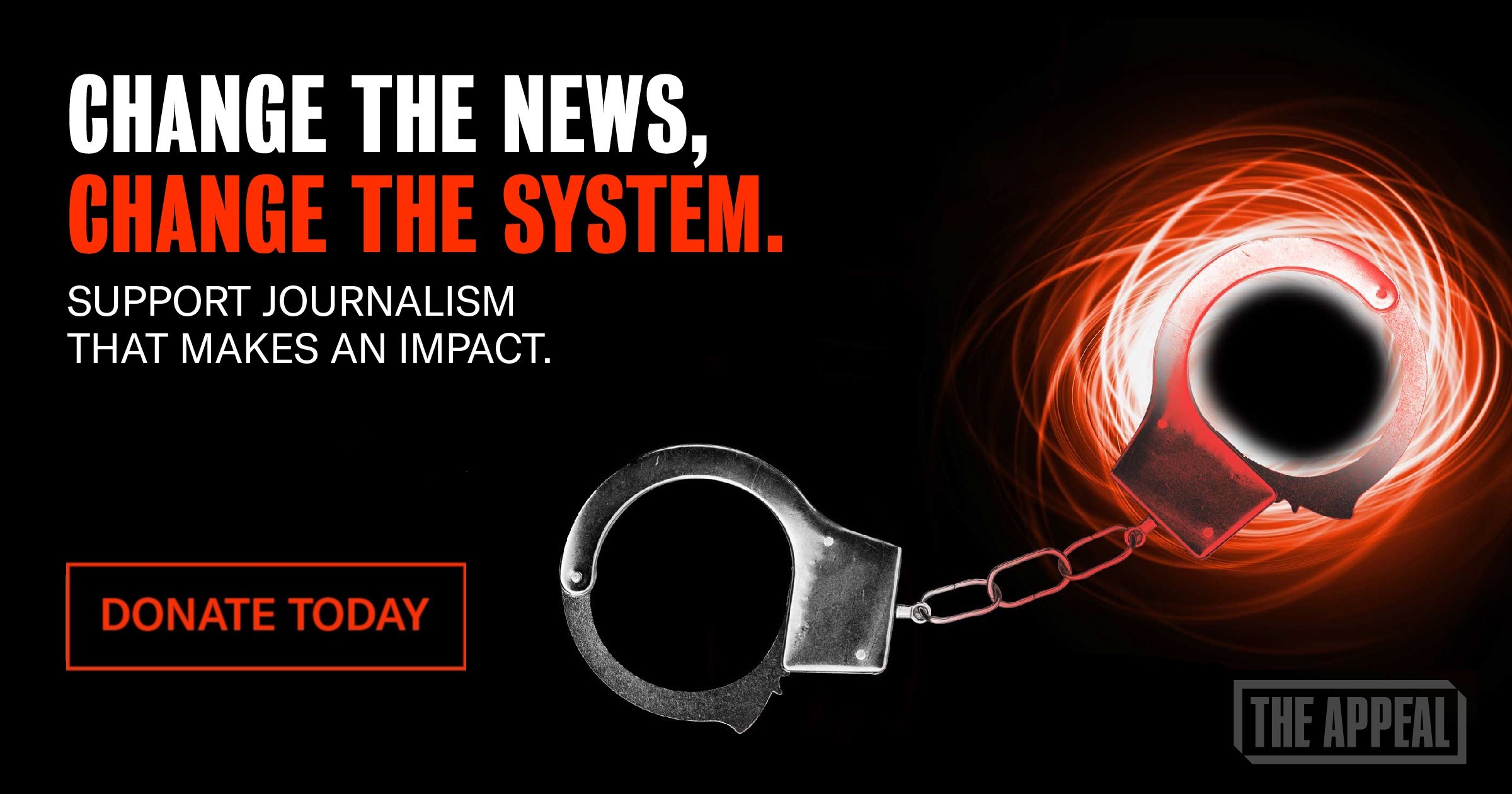Newsletter
Prisoners Like Me Have a Responsibility to Mentor At-Risk Kids
In prison, I’ve done work to come to terms with the pain I’ve both felt and caused. Hopefully, my story—and others like it—can deter younger children from making the same mistakes.

Two years ago, I sat in a classroom with nine men incarcerated for violent crimes. I’m one of them—I’m serving a sentence of 25 to life for murder. In 2023, the now-shuttered Sullivan Correctional Facility, a maximum-security prison in New York State, started a pilot program called Trauma Addiction Mental-health and Recovery (TAMAR). I was hoping the class might help me resolve some childhood issues. This is where I first got to know Rashon Venable.
Rashon is 32 years old and was a fellow student in the Sullivan college program. He’s serving a 19-year-to-life sentence for murder. He’s also an HIV awareness educator and led the prison’s Muslim community. Rashon spoke about the trauma of being thrown into solitary confinement as a juvenile. Our lives are similar, and his words reminded me of when I first got arrested as a kid—sending me down a path that ultimately led me here.
This class taught me a lot about myself. These days, it also makes me wonder how we, as prisoners, can help prevent kids in juvie from coming to prison as adults—maybe by taking a closer look at our own lives.
According to the most recent statistics from the U.S. Office of Juvenile Justice and Delinquency Prevention, U.S. courts heard 437,300 juvenile criminal cases in 2021. That’s roughly 1,200 cases each day. Multiple studies show that child incarceration increases recidivism—data suggests that a majority of those arrested as kids will later reoffend or become imprisoned as adults. I believe mentorship can help these younger people, especially when the formerly incarcerated play active roles. It’s our responsibility to effect the same change in others that we’ve achieved in ourselves.
Several months after the trauma class, Rashon and I joined a writing workshop led by John J. Lennon, an accomplished journalist and another prisoner here in New York. As we brainstormed different writing ideas, I asked Rashon if I could interview him about being locked up as a kid. He agreed. Days later, we sat in the prison yard at concrete slabs built to resemble tables. It was the middle of June. As the morning sun radiated heat, Rashon told me about his early years.
In mid-Jan. 2007, Rashon was attending junior high school in New York City’s Hollis, Queens neighborhood. He and his friends often beefed with the older kids. On this day, Rashon said he agreed to back his friend up in a fight. After the final bell, a free-for-all broke out in the school parking lot. Rashon jumped in. A crowd encircled the mele. Then security guards intervened, and everyone scattered.
“It was a normal thing for us,” Rashon told me. “We fought, we won, we lost. Sometimes you got jumped.”
The next day at school, staff called Rashon to the main office. He said he found his friend there waiting with the principal, a truancy officer, and two New York City cops. Another officer walked into the room with the older kid that they had jumped, his face swollen and bruised. The kid identified both of them as the ones who attacked him. The cops then arrested Rashon. I watched Rashon shake his head as he recalled his younger self—he thought getting escorted out in cuffs would boost his reputation.
I could relate. I first felt cold metal cuffs on my wrists when I was 12 years old. The Department of Child and Family Services took me from my family in Connecticut and placed me in a group home. I had three fights within my first week. In the last one, I broke a kid’s nose. The staff called the police. I spent the night in a holding cell and then was placed in another home.
Rashon was arrested repeatedly as a kid. In 2016, at the age of 24, Rashon pleaded guilty to fatally stabbing his friend after a heated argument that happened eight years prior, when he was 16 years old. He said he felt almost relieved when he got arrested.
I asked Rashon if the courts had considered that he was still a kid when he committed his crime.
“They didn’t even mention it,” he said. “But I hate the fact that I was able to avoid responsibility for so long.” His voice cracked as he spoke about the pain that he had caused the family. “I know if I would have been caught at that moment or right after, I would have denied it,” he said. “The fact that I was older when this caught up to me gave me the chance to realize I needed to take responsibility.”
Rashon’s words weighed on me. The circumstances of my upbringing were not ideal—beatings, group homes, and eventually, juvie. But I realize now, despite the cliche that “hurt people hurt people,” the pain I endured didn’t excuse the horrible pain I caused.
Unlike Rashon, I lied about committing murder for years. I blamed other people, from my ex-girlfriend to an unknown intruder. I leaned on my childhood mental health record and pleaded not guilty by reason of mental disease or defect. It took years after my conviction for me to start making necessary changes to my life and mindset. I still struggled with accountability.
Writing a personal essay called “Uprooting the Lie” helped me admit that I had killed my girlfriend’s two-year-old son, Maurice. And, in TAMAR classes, I learned about generational trauma and how the corporal punishment I received turned into the abuse I gave Maurice. But I also realized I can be more than the pain I’ve experienced—and caused.
Coming to terms with this on the page has given me a new sense of purpose. I’ve realized that, as prisoners who’ve spent decades behind bars, it’s our responsibility to share our stories and be the credible messengers our communities’ children need.
To accomplish this, people like Rashon and me must use our opportunities to better ourselves. I’m humbled every day by the realization that 1,200 children might be spending their first nights in a cell like mine. If we hope to be part of the solution, we must first address our own traumas.
Dyego M. Foddrell is a writer in Fishkill Correctional Facility in Beacon, New York.

In The News
California counties are struggling to treat people charged with repeat drug offenses. A 2024 law says defendants must attend drug or mental health therapy or go to prison, but it does not fund the treatment. [Cayla Mihalovich / CalMatters]
Trump’s DOJ sued New York state for allegedly interfering with federal immigration enforcement. A 2019 state law prohibits sheriffs and other officials from giving ICE access to motor vehicle records without a warrant. [WABC 7]
US officials deported a Venezuelan woman and her two children just two hours after state troopers pulled her over for allegedly driving too slow in Tucson, Arizona. The woman says border agents forced her to leave her other two kids behind. [John Washington / Arizona Luminaria]
Detroit’s homicides reached a 50-year low in 2024, partly thanks to a community violence intervention program called ShotStoppers. But the program’s federal funding is now at risk. [Josiah Bates / The Trace]
Twelve women overdosed last week in the Phoenix area’s county jail system. The Maricopa County Sheriff’s Office recently stopped scanning jail staff—the most common source of contraband nationwide—for drugs and weapons. [ABC 15]
ICE detained at least three undocumented immigrants in Nashville during routine check-ins, none of whom had criminal records. Last month, The Trump administration began requiring ICE field offices to detain at least 75 people daily. [Laura Dean / The Nashville Banner]
